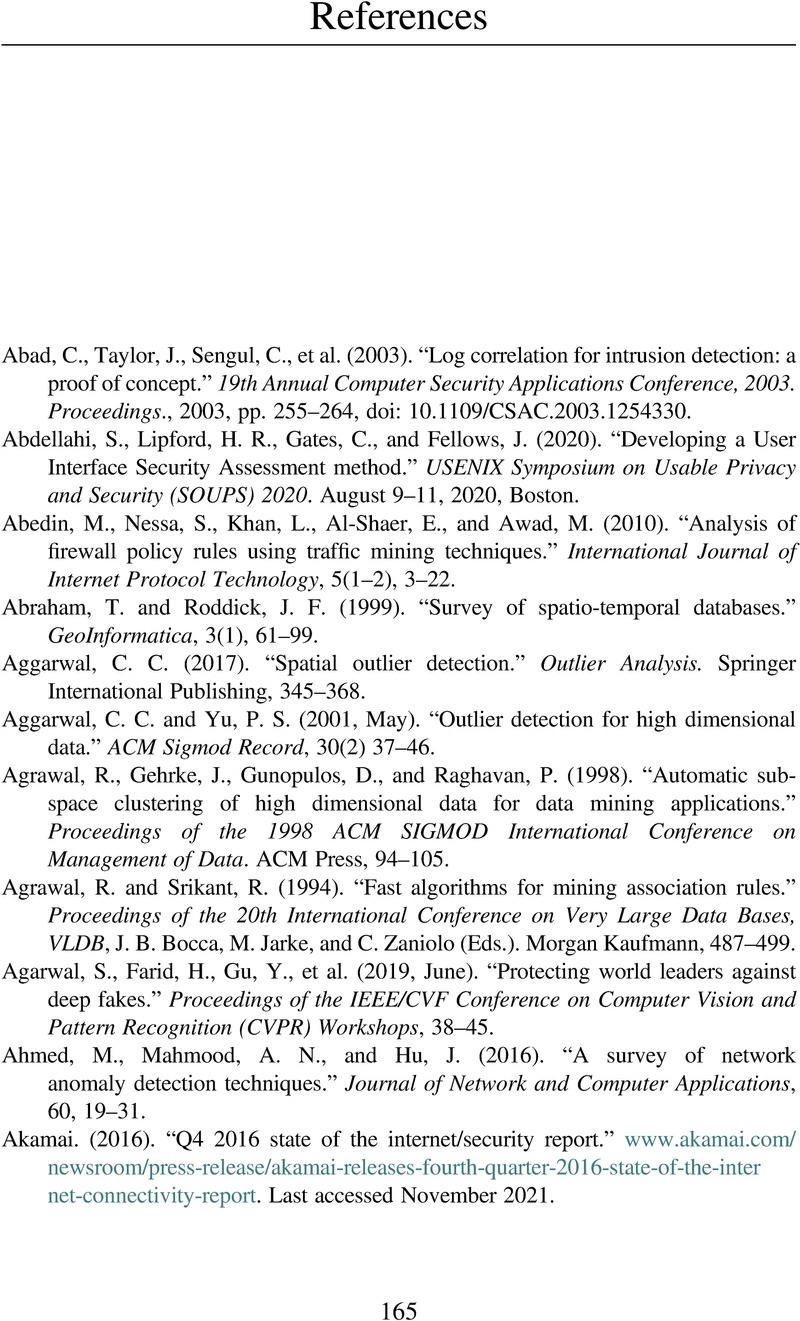Book contents
- Data Analytics for Cybersecurity
- Data Analytics for Cybersecurity
- Copyright page
- Contents
- Preface
- Acknowledgments
- 1 Introduction
- 2 Understanding Sources of Cybersecurity Data
- 3 Introduction to Data Mining
- 4 Big Data Analytics and Its Need for Cybersecurity
- 5 Types of Cyberattacks
- 6 Anomaly Detection for Cybersecurity
- 7 Anomaly Detection Methods
- 8 Cybersecurity through Time Series and Spatial Data
- 9 Cybersecurity through Network and Graph Data
- 10 Human-Centered Data Analytics for Cybersecurity
- 11 Future Directions in Data Analytics for Cybersecurity
- References
- Index
- References
References
Published online by Cambridge University Press: 10 August 2022
- Data Analytics for Cybersecurity
- Data Analytics for Cybersecurity
- Copyright page
- Contents
- Preface
- Acknowledgments
- 1 Introduction
- 2 Understanding Sources of Cybersecurity Data
- 3 Introduction to Data Mining
- 4 Big Data Analytics and Its Need for Cybersecurity
- 5 Types of Cyberattacks
- 6 Anomaly Detection for Cybersecurity
- 7 Anomaly Detection Methods
- 8 Cybersecurity through Time Series and Spatial Data
- 9 Cybersecurity through Network and Graph Data
- 10 Human-Centered Data Analytics for Cybersecurity
- 11 Future Directions in Data Analytics for Cybersecurity
- References
- Index
- References
Summary

Information
- Type
- Chapter
- Information
- Data Analytics for Cybersecurity , pp. 165 - 188Publisher: Cambridge University PressPrint publication year: 2022
